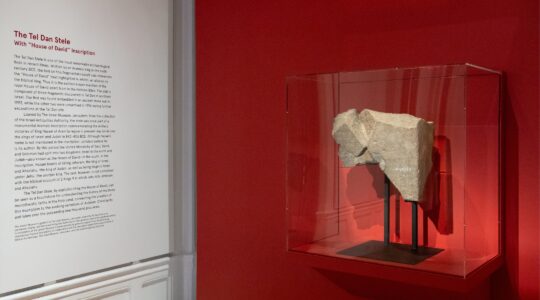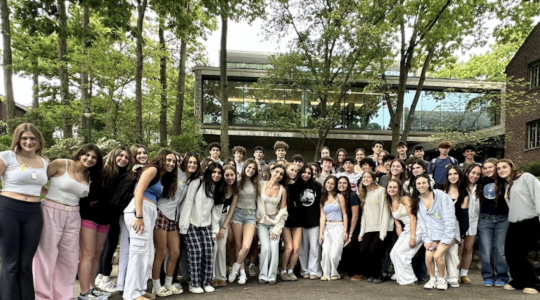On Friday at dusk, I’m walking down Columbus Avenue on my way to my friend Eva’s house for Shabbat dinner, carrying a bottle of wine to give her. A woman pushing a toddler in a stroller passes me. Recognizing her as someone from my synagogue, I wish her a Good Shabbos, and she smiles and wishes me the same.
The bustling busy-ness of jobs and playdates and grocery shopping and every other manner of preoccupation has dissipated. In its wake, a sense of calm has settled on the almost-empty sidewalks. It’s as if the entire Upper West Side is releasing an end-of-the-workweek sigh and whispering: Sabbath.
For the next 25 hours, observant Jews in my neighborhood will obey the commandment to keep the seventh day holy. The Sabbath is a time set apart from the other six days of the week to rest and reflect on God, but the space that the Sabbath inhabits is conversely united. Almost invisible wires stretch from lamppost to lamppost along existing utility wires around much of Manhattan, as far north as 126th Street, as far south as Greenwich Village, and east and west to both rivers. These wires create an eruv, (“mingling” in Hebrew), symbolically rendering the public space within them as a private domain.
As they are in other parts of our area, these unobtrusive wires are at the center of a contentious debate in Westhampton. Even harder to believe is that some of those who oppose their construction are fellow Jews. Why? In short, they don’t want Orthodox Jews in Westhampton Beach.
For observant Jews, one of the many laws of the Sabbath prohibits carrying anything — a tissue, a cup, a baby, a bottle of wine —except within one’s own home. This effectively means that they can’t walk out the door from Friday night through Saturday night and bring their keys or use a cane or push a child in the stroller without violating the law. As a result, women, children and the elderly will more than likely be confined to their homes for the duration of Sabbath.
Enter the eruv — a fence, so to speak — that mingles the two worlds so that one day a week, Jews can regard the street, the park, the synagogue as extensions of their own homes. One of the claims of the plaintiffs in Westhampton is that the eruv will transform the community into a “narrow and parochial” one. In fact, the eruv is designed to do the opposite — to enable Jews to mingle outside their own borders.
Unlike boundaries that exclude people, this boundary is inclusive and expands possibilities. Obviously, it’s there to enable more Jews to observe the Sabbath, and to provide greater cohesiveness within the community. But to my mind, it also serves as a metaphor for something larger. That is, that religion needn’t separate us from one another. Rather, it’s possible for people of all faiths, and all levels of observance, to coexist, to fully embrace the past and the ancient text that is the Torah, while living in the modern world.
Boundaries by definition are just as often emotional and invisible as they are physical. In this case, it seems to me that the eruv is symbolic of something else, and that is pluralism and religious freedom. The Westhampton opponents feel that the eruv infringes on the rights of the non-Orthodox. I suspect they would prefer that the Orthodox Jews remain as invisible as the eruv.
In New York City, beyond the many Jewish institutions that are able to exist because of those wires’ tenuous, invisible embrace — from kosher restaurants to synagogues to Jewish day schools — what the eruv really supports is the existence of a very visible, observant, Jewish community, one that can “mingle” not only with one another but also within the community of gentiles and non-observant Jews.
When I arrive at Eva’s apartment, and sit around her Shabbat dinner table with the usual assortment of New York City Jews — a teacher, a therapist, a few strictly observant, others not so much — I realize that it’s because of the eruv that there is this easy flow in and out of one another’s neighborhoods and one another’s homes, especially on the Sabbath and the high holidays. Every Friday at dusk, as we separate the seventh day from the rest of the week and enjoy the Sabbath’s sigh, this symbolic device that mixes the public and private domains insures that New York City belongs to all of us. We can mingle with one another, all of us, in our communal home.
Angela Himsel is a writer living on the Upper West Side.
The New York Jewish Week brings you the stories behind the headlines, keeping you connected to Jewish life in New York. Help sustain the reporting you trust by donating today.




